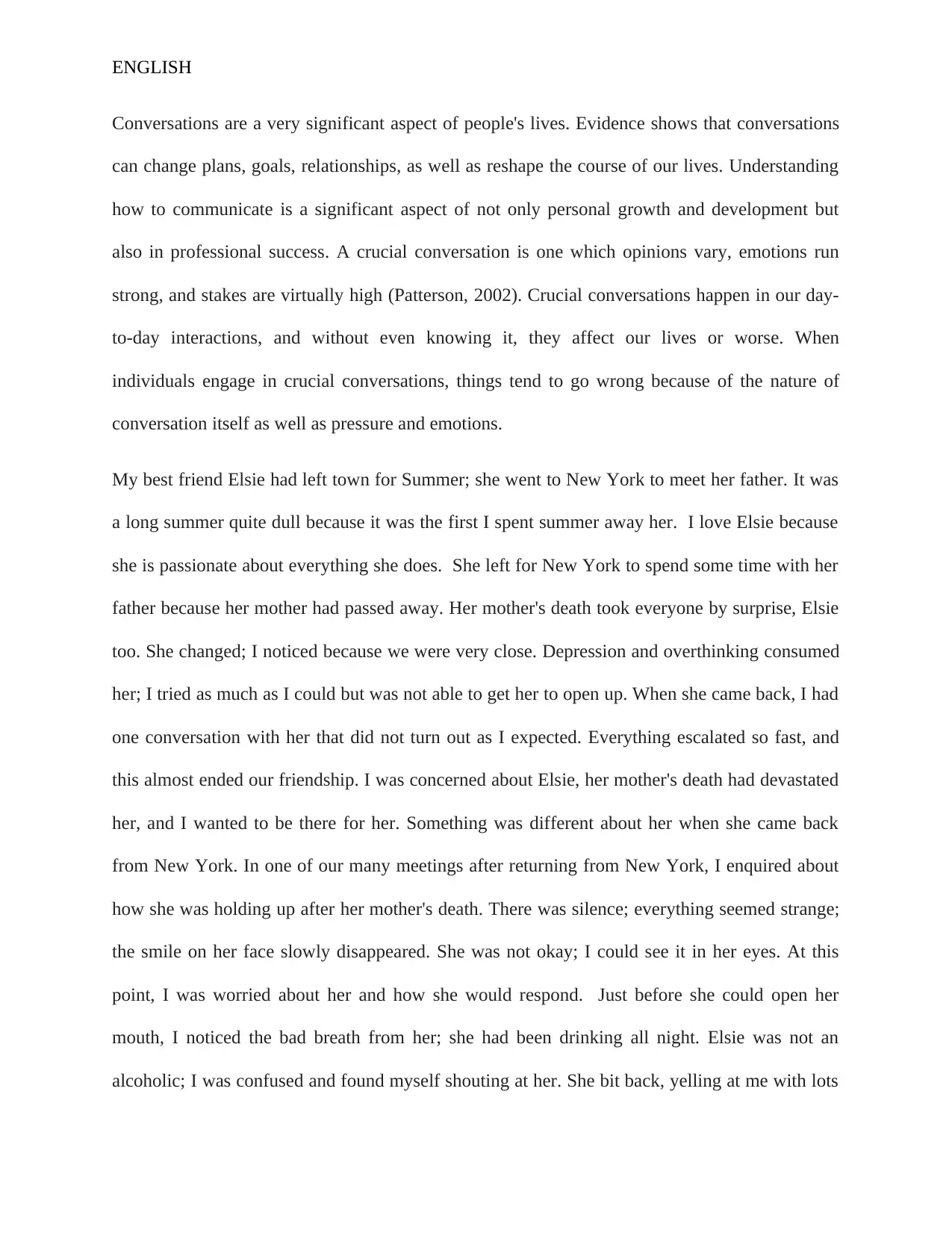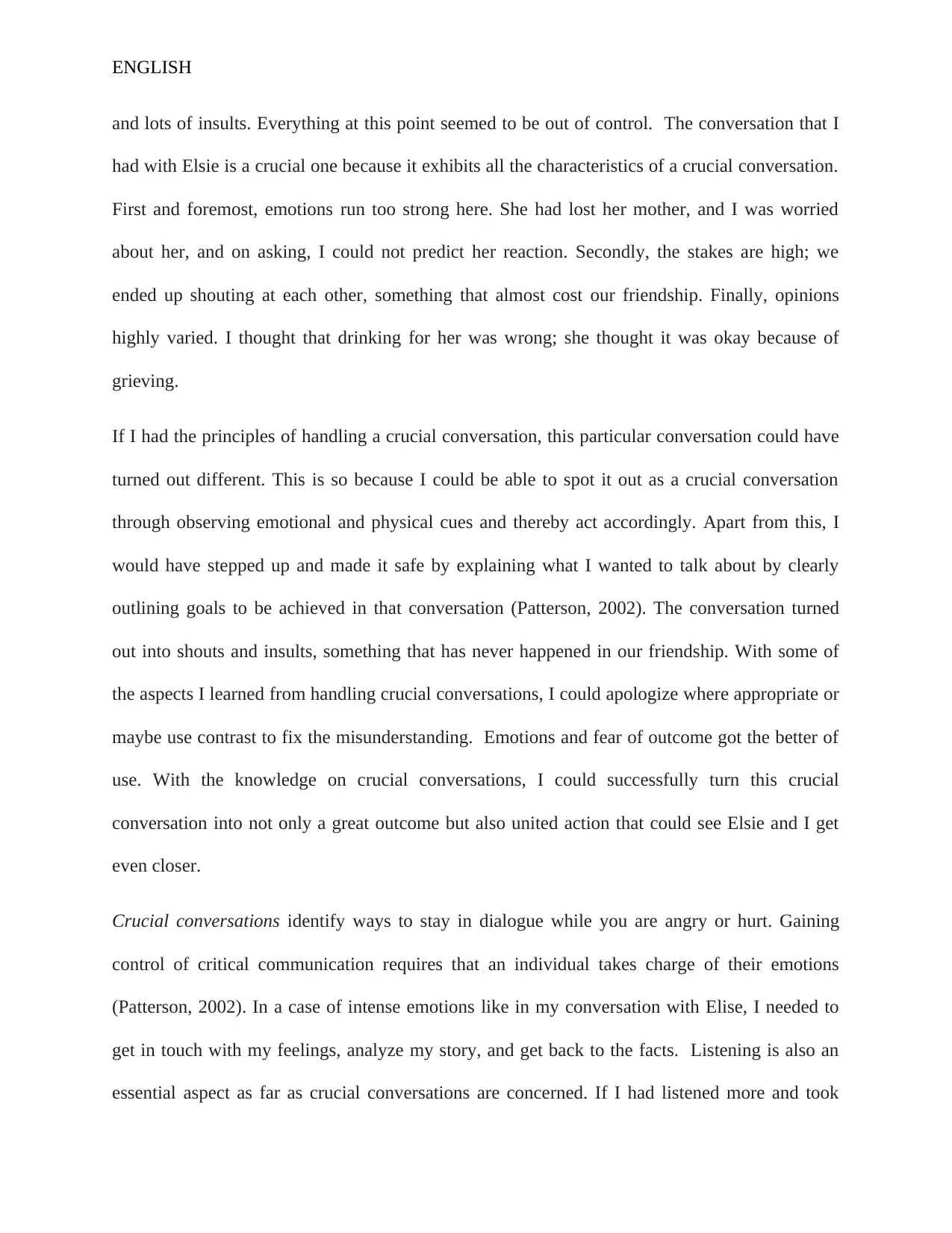Analyzing Interpersonal Process: A Crucial Conversation Example
VerifiedAdded on 2022/09/21
|5
|886
|19
Essay
AI Summary
This essay delves into the analysis of a crucial conversation, examining the dynamics of interpersonal communication through a personal narrative. The author recounts a challenging interaction with a friend, highlighting how emotions, differing opinions, and high stakes contributed to a negative outcome. The essay identifies the characteristics of a crucial conversation and discusses how applying principles of effective communication, such as managing emotions, active listening, and creating a safe environment, could have altered the course of the interaction. The author reflects on the importance of understanding and navigating crucial conversations to foster positive relationships and achieve better outcomes in various aspects of life. The essay emphasizes the significance of emotional intelligence and strategic communication techniques in handling sensitive discussions and resolving conflicts constructively, referencing key concepts from the provided literature.
1 out of 5












![[object Object]](/_next/static/media/star-bottom.7253800d.svg)